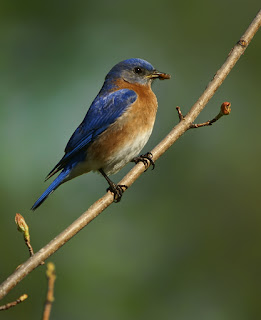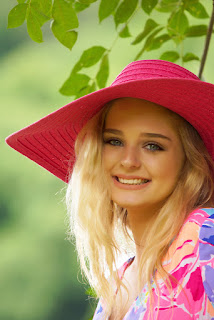The key to good accent lighting is to make it appear natural. What you do not want is to make your lighting look like a bunch of harsh flash cubes have gone off. So, let's take a look at how the lighting on this photograph was setup.
First of all the natural light streaming into and across the room looked pretty good to the eye, but taking a quick photo using the natural ambient light revealed just how dark it really was, especially back in the corners and behind the counter. Way too many shadows and bright spots scattered here and there that made a natural light photo look flat and empty. The room required some help to lift the light where it look natural and exciting. To make it work, I had to strategically place 4 speedlights around the room to provide colorful accents.
The main light was fitted to a 20 x 30 softbox and was situated so it would cast a natural looking light across the front of the model. I set the speedlight to a wide area setting and powered it up to around 1/2 power. This helped to enhance the natural light filtering in from the large windows by the entrance and gave a look to the room where it appeared a strong outside source of light was filtering through.
The main counter possessed a wonderful shiny brushed chrome patina which included the bar stool chairs. There was also a good splattering of red painted walls and the bar stool padding was also colored red which added an exciting vintage look to the scene. In the far back corner was a recessed booth with a single soft incandescent light hanging from the ceiling. This area proved to be rather dark, so I added a speedlight angled upward to fill in that dark area. A reddish gel was added to provide a splash of color in the background and to help tie in with the red seats and painted walls and to provide a bit of color vibration.
 |
| Cafe Shoot Lighting Layout |
In order to highlight the chrome and shiny surface of the counter I placed another speedlight to the right and attached a blue gel which cast a wonderfully cheerful bluish tint across the room. This bluish tint was caught and reflected by the chrome and also complimented the models dress which caught a hint of blue across the back edge providing a subtle separation from the background. Her white lacy hat also caught some of that blue light which helped it to contrast and stand out as an interesting compositional element.
The room seemd to vibrate more with the hint of blue light as compared with a more normal white daylight. A fourth ungelled light was placed well off camera to the right and simply angled straight up to fire against the ceiling and add a bit more ambient light across the room. All of these accent lights were powered down to between 1/16th and 1/4 power to provide just a enough light to do the job. Some experimentation was required to find the right combination for each light.
The exciting checkered flag floor added a wonderful balance to the scene and reflected bits and pieces of all the lighting. The area behind the counter remained a bit dark, but all the shiny surfaces caught and reflected enough of the extra light to fill it in enough to allow it to become more visable.
Compositionally, the angle of the shot was critical and the high angle used was simply a spur of the moment attempt to try a different look...to take the image farther down the compositional path. The checkerboard floor and wide angle lens skewed the look just enough to make it appear like leading lines directing the eye into and across the image. In reality, the checkerboard floor is what made the shot, yet it does so naturally and without overpowering the image. It simply looks like it belongs which is what it should do.
So, lighting a scene like this one requires the ability to see the corners, recognize the potential of what is there, and then enhance the natural flavor just enough to give the composition a powerful yet subtle appearance by filling in the blanks with effective accent lights.



















































